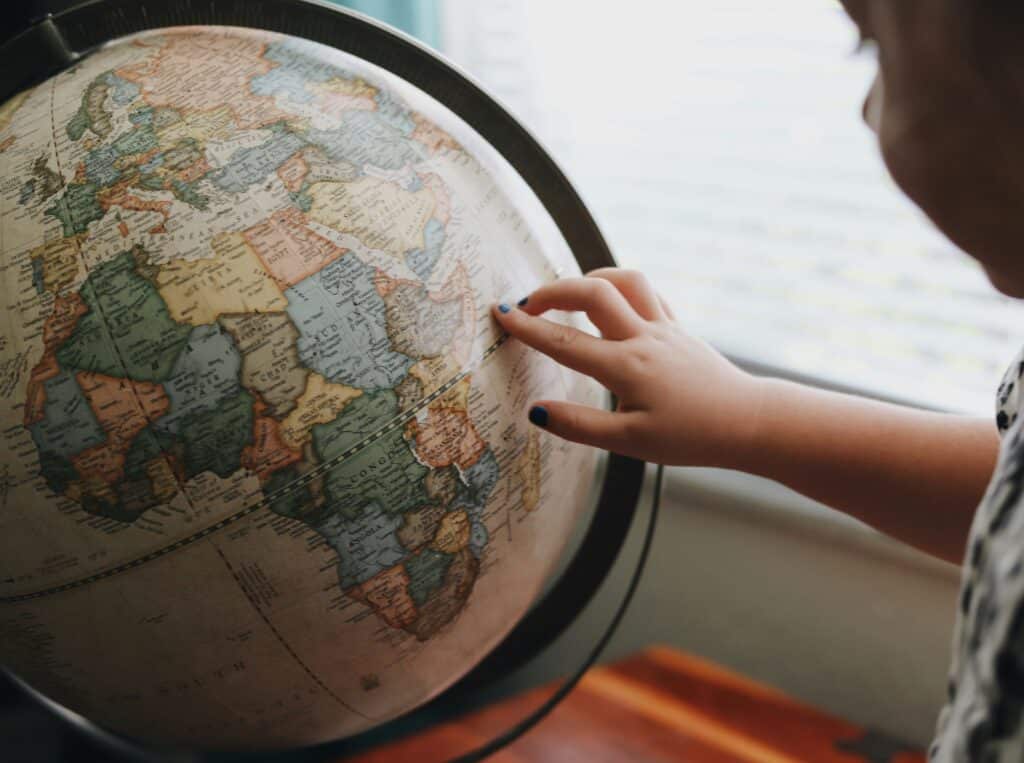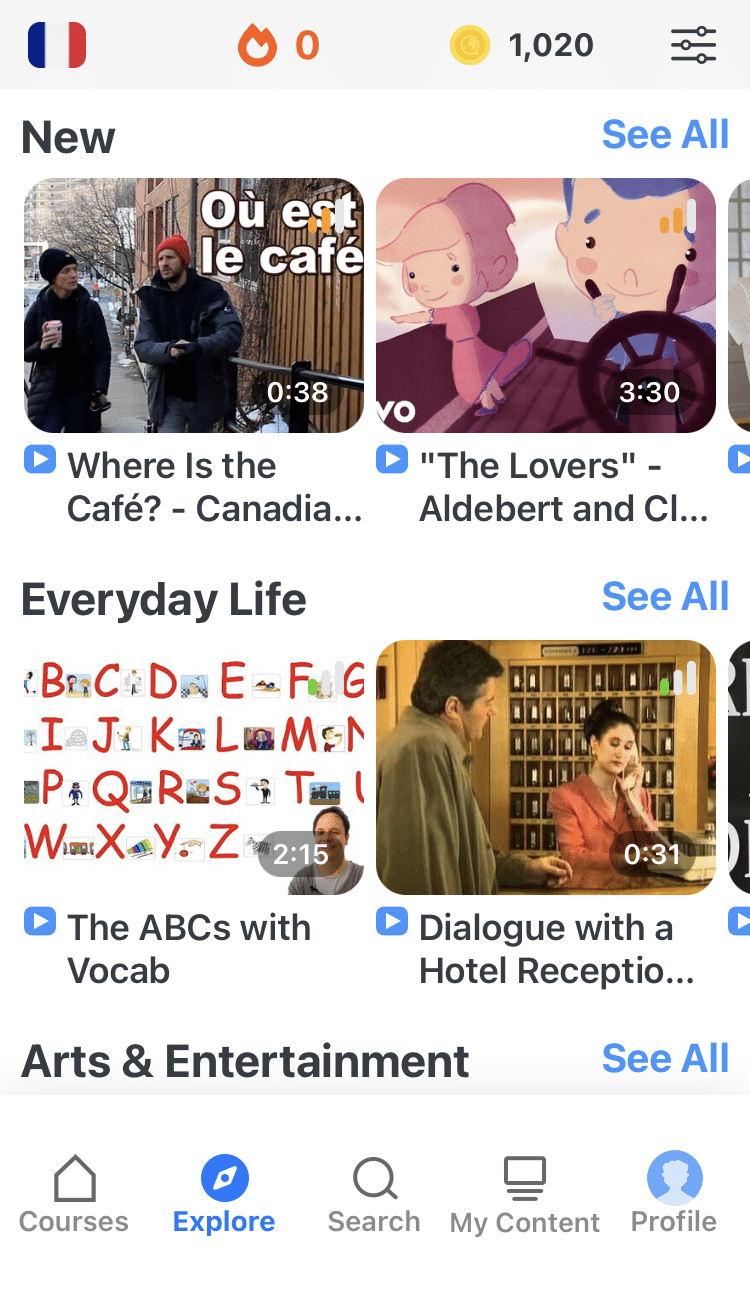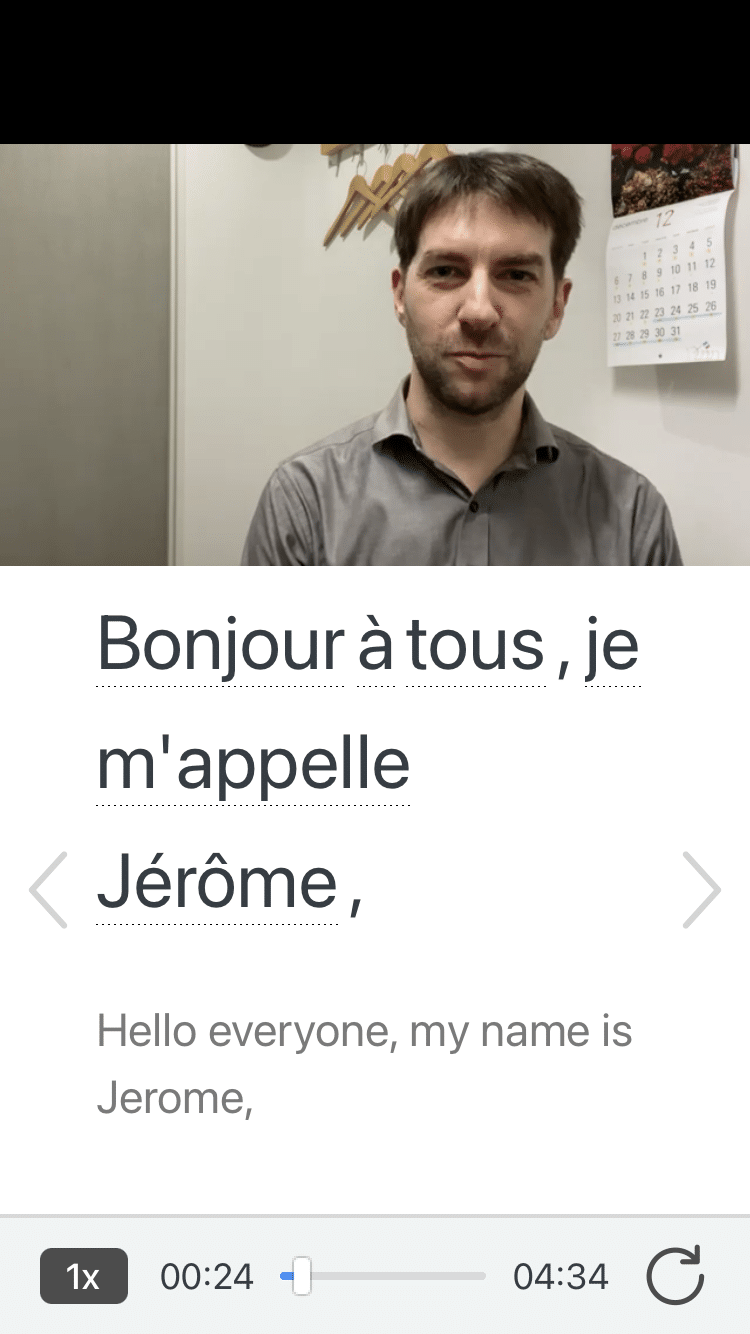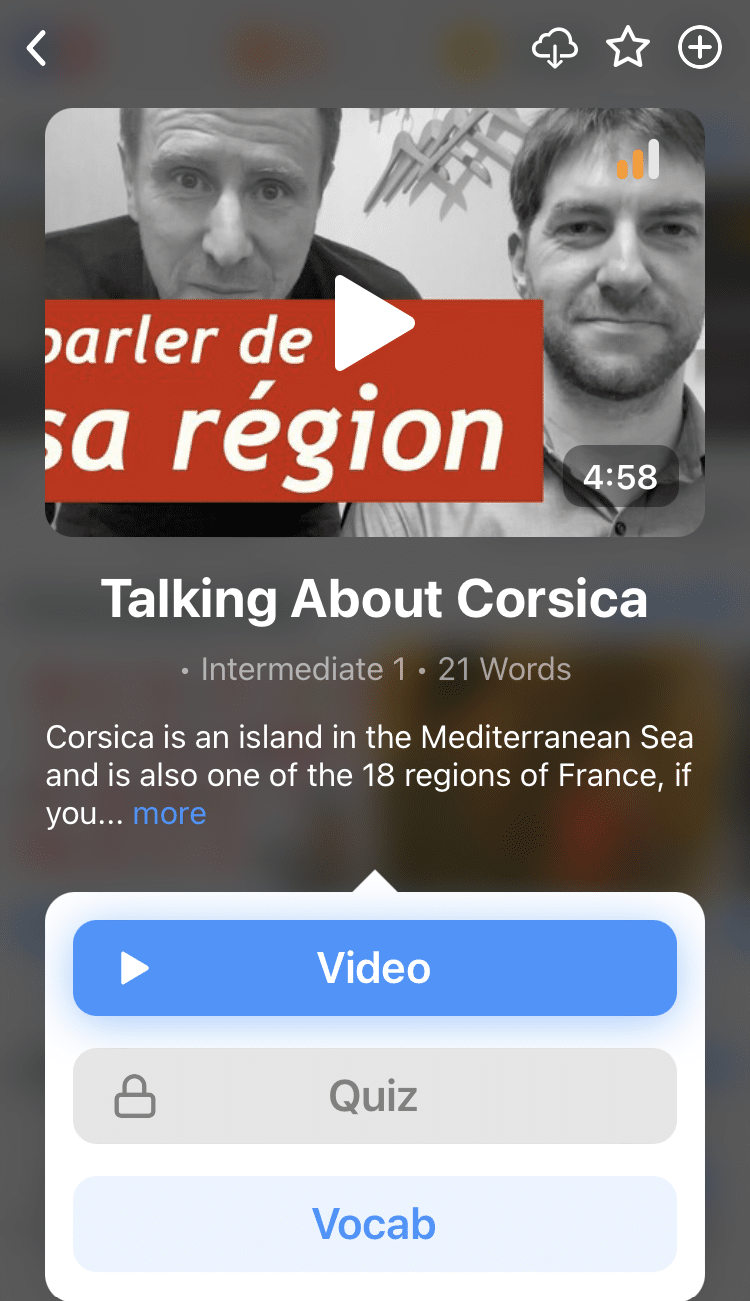
French Dialects and Varieties Spoken Around the World
Learning about the different French dialects will help round out your knowledge about the language.
If you’re hoping to learn French for a particular reason such as travel or business, it’s beneficial to tailor your learning to the French-speaking region you have in mind.
In this post, you’ll learn about the dialects and regional varieties of French. We’ll also take a closer look at some of the major French-speaking areas of the world.
Contents
- Overview of French Dialects
- French Dialects in French
- Belgian French
- Swiss French
- Canadian French
- Louisiana French
- Haitian French
- North African French
- Congolese French
- French Dialects in India
- How to Practice French Dialects
- And one more thing...
Download: This blog post is available as a convenient and portable PDF that you can take anywhere. Click here to get a copy. (Download)
Overview of French Dialects
French has several regional varieties that often differ in pronunciation, vocabulary and even grammar from Standard French. Here’s a breakdown:
Varieties Within France
- Metropolitan French: This is the standardized French used in education, media and official settings. It’s based on the Parisian dialect.
- Meridional French: Spoken in the south of France, it has distinct vocabulary, pronunciation and verb conjugations compared to Metropolitan French. It’s strongly influenced by the Occitan language.
Other Regional Variations
- Belgian French: Has some unique vocabulary and pronunciation compared to Parisian French, but the accent is similar.
- Swiss French: Spoken in Switzerland, it has influences from German and other regional languages and is generally spoken more slowly.
- African French: French is an official language in over a dozen African countries. It’s not one single dialect and varies depending on the specific region and its colonial experience.
- Canadian French: Spoken in Quebec and other parts of Canada, with distinct vocabulary and pronunciation compared to Metropolitan French.
- Acadian French: Spoken in parts of Canada and Louisiana, it was developed from 17th-century French dialects with some similarities to Canadian French.
- Louisiana French: Spoken in southern Louisiana, this French dialect has African and Native American influences and is very similar to Acadian French.
- Haitian French: Spoken in the Caribbean island nation of Haiti, it’s pretty close to Metropolitan French. Not to be confused with Haitian Creole, a separate language from French.
While these variations exist, mutual intelligibility is generally high. There are also some sister languages—including Picard, Limousin, Gascon, Occitan and Francoprovençal—and French-based Creole languages that are their own official languages and therefore aren’t considered French dialects.
Let’s take a closer look at some of the French dialects spoken around the world.
French Dialects in French
When people refer to French from France, they usually mean the Parisian accent. Parisian French is fast and very expressive. Everything is génial, énorme, trop bien (great, fantastic, really great) and so on! Many English words are also used, especially at work.
However, the French language in France is diverse and colorful with many different accents. For instance, in Marseille, you can hear a classic Southern French accent, characterized by its unique tonality and open rhythmic intonation.
Marseillais, as it’s called, is also spoken very quickly and can be difficult for the untrained ear to understand—non-native and native French speakers alike! Many words are mangés (have their ends cut off; literally “eaten”), and eh is added at the end of many phrases.
Belgian French
Around 40% of the Belgian population speaks French, which makes it a major Francophone country in Europe. As such, it has unique ways of speaking the language—check out these 10 different Belgian Francophone accents.
You’ll likely notice that Belgian French sounds firmer than the French of France. This is mainly due to the influence of Dutch, also an official language of Belgium. Generally speaking, though, the Belgian French accent is very similar to the French accent of France, simply because of the two countries’ proximity.
If you look into the inconsistencies between Belgian French and French spoken in France, you’ll find some differing vocabulary and a separate counting system, among other things.
Swiss French
Switzerland is a polyglot’s paradise. French, Italian and German are all official state languages, and native Francophones comprise about 20% of the Swiss population.
Similar to the country’s political stance in the world, the Swiss French accent is quite neutral. There’s not much of a marked difference from Parisian French, and many linguists claim that Swiss French is indeed standard French.
Beyond the accent, you’ll probably also notice that Swiss Francophones tend to speak a bit slower than their French counterparts, which makes Swiss French sound and feel more relaxed than other versions.
Canadian French
French has been spoken in Eastern Canada since the early 1500s. It’s currently the mother tongue of about 95% of Quebec’s population and some of the population of the bilingual province of New Brunswick on the Atlantic coast.
These Canadian variants of French don’t differ from their European counterparts in grammar or written expression, but they certainly do at the spoken level! The Quebecois accent has a pleasant tonality and Quebec French retains much of the syntax and phonetics of Old French.
A slightly different version of French is spoken in the coastal province of New Brunswick. Acadian French has a marked Anglophone/English tonality, and the two languages are often mixed together. Other varieties of Canadian French include Newfoundland French and Métis French.
Louisiana French
Louisiana has a notable French-speaking population, often called Cajun French. Originally, there were three main dialects in the area: Acadian French, Colonial French and Louisiana Creole.
The term “Louisiana French” refers to the modern-day dialect that grew out of the combined Acadian and Colonial forms, which you can hear in the video above.
On the other hand, Louisiana Creole is a mixture of French and African languages. It’s very different from Parisian French and comes from Louisiana French as well. Louisiana Creole is an endangered language—it’s estimated that less than 10,000 people speak it today, most of them older.
Haitian French
French is the official language of Haiti, but Haitian Creole—a mix of African languages, Spanish, French and more—is definitely the go-to language on the streets and elsewhere. In the video above, you can hear French alongside Haitian Creole.
Also referred to as Caribbean French, Haitian Creole has a similar intonation to African French because of Haiti’s abundance of African languages and dialects. However, due to the history of slavery on the island, such linguistic roots are hard to pinpoint.
If you’re studying French, you won’t be able to understand Haitian Creole completely, but you’ll likely be able to pick out the French vocabulary immediately.
North African French
It’s impossible to discuss African French in complete detail in this post, considering its sheer depth and diversity, but we’ll start by reviewing Maghreb, or North African French. It’s spoken in Tunisia, Algeria, Morocco and even Egypt.
Algeria, the biggest country on the African continent, is inextricably linked to France by a century of colonial rule. As a result of this colonization, the French language has had a major influence in Algeria and other North African countries.
Perhaps the most significant feature of Maghreb French, though, is the effect of Arabic on its pronunciation, including guttural phonetics and the use of Arabic words in French sentences and vice versa.
Congolese French
French is the official language of the Democratic Republic of the Congo in Central Africa. Along with Gabon, the Congo has one of the highest proportions of Francophones on the African continent.
Brought over by Belgian colonization, French in Central Africa is quite different from that of Northern Africa, since Arabic isn’t spoken much in the central countries.
However, it coexists with approximately 242 local languages… so you bet some mixing happens! French sentences in the Congo naturally have a different kind of flow, and many describe it as a bit choppy, or “cut short,” if you will.
French Dialects in India
During the heyday of French colonization, France owned 5 colonies in India known as French India, mostly in coastal regions of the east and south. Today, the largest remaining influence of French India exists in the Puducherry area, and it’s still an official language of the region.
The video above is an interview with a young girl from Puducherry. The French language there has been significantly influenced by English and local languages like Tamil.
However, those who choose to learn French may be taught by French expatriates and, therefore, develop more of a standard French accent. This spotlight of Puducherry from France24 provides more detail about French influence in India.
How to Practice French Dialects
One of the best ways to practice different French dialects is by consuming media from those regions. This will expose you to the natural language, including its unique expressions and accents.
YouTube is a great place to find content created by people from all over the world. You can find channels made for French learners as well as authentic content such as vlogs. For video content with learner support, you can use an immersive language program like FluentU.
FluentU takes authentic videos—like music videos, movie trailers, news and inspiring talks—and turns them into personalized language learning lessons.
You can try FluentU for free for 2 weeks. Check out the website or download the iOS app or Android app.
P.S. Click here to take advantage of our current sale! (Expires at the end of this month.)
Now you know the main features of each of the French dialects found around the world.
Which one will you choose to learn?
Download: This blog post is available as a convenient and portable PDF that you can take anywhere. Click here to get a copy. (Download)
And one more thing...
If you like learning French on your own time and from the comfort of your smart device, then I'd be remiss to not tell you about FluentU.
FluentU has a wide variety of great content, like interviews, documentary excerpts and web series, as you can see here:

FluentU brings native French videos with reach. With interactive captions, you can tap on any word to see an image, definition and useful examples.

For example, if you tap on the word "crois," you'll see this:

Practice and reinforce all the vocabulary you've learned in a given video with learn mode. Swipe left or right to see more examples for the word you’re learning, and play the mini-games found in our dynamic flashcards, like "fill in the blank."

All throughout, FluentU tracks the vocabulary that you’re learning and uses this information to give you a totally personalized experience. It gives you extra practice with difficult words—and reminds you when it’s time to review what you’ve learned.
Start using the FluentU website on your computer or tablet or, better yet, download the FluentU app from the iTunes or Google Play store. Click here to take advantage of our current sale! (Expires at the end of this month.)



